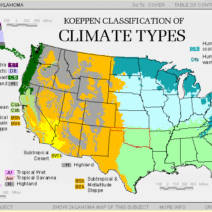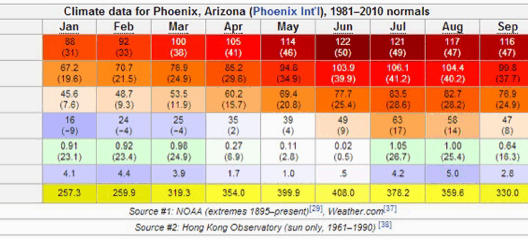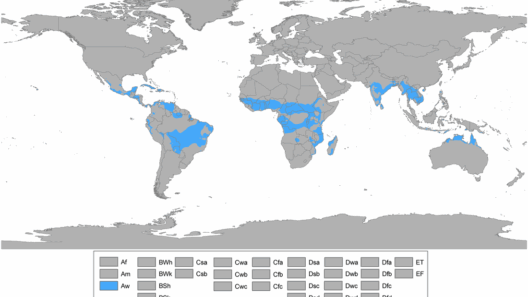North Carolina is renowned for its stunning geographical diversity, a tapestry woven with mountains, rolling hills, plains, and an extensive coastline. These varied landscapes contribute to the state’s distinct climate zones, which differ dramatically from the cool, temperate realms of the Blue Ridge Mountains to the balmy, subtropical temperatures of the coastal plains. What if you could experience the thrill of savoring both extremes in just a few hours of travel? This dichotomy poses a unique challenge: how do we appreciate and preserve these disparate climatic regions while combatting the overarching threat of climate change?
Let us embark on a journey through the climate of North Carolina, exploring its multifaceted characteristics, and examining the implications of these changes on the environment and communities.
1. The Geographic Palette
North Carolina’s geography is stunningly diverse. Stretching from the Appalachian Mountain range in the west to the sandy shores of the Atlantic Ocean in the east, the state encompasses several distinct climate regions. At its western fringes, the towering Blue Ridge Mountains bask in the embrace of elevated temperatures and enhanced moisture, creating a cool sanctuary amidst the sea of rising heat throughout the country.
Moving eastward, the terrain shifts to the gently sloping foothills and eventually to the expansive Coastal Plain. Here, the climate transforms, offering warm subtropical conditions laden with humidity. This geographic contrast plays a pivotal role in shaping the ecosystems and agricultural practices throughout the state.
2. The Climate of the Blue Ridge Mountains
In the Blue Ridge Mountains, the climate is classified as temperate, characterized by cooler temperatures and increased precipitation compared to the state’s eastern regions. The temperature ranges significantly, with summer highs averaging around the mid-80s°F (around 29°C) while winter lows can dip below freezing. The mesmerizing beauty of this mountainous realm is accentuated by lush forests, vibrant wildflowers, and cascading waterfalls.
This region is subject to intricate microclimates, largely influenced by elevation, which create diverse habitats. For example, in some areas, dense fog often blankets the ridges, nurturing a myriad of plant and animal life that thrive under these unique conditions. However, as climate change progresses, the delicate balance of these microclimates faces potential disruptions that could lead to loss of biodiversity, threatening both the flora and fauna that define this region.
3. The Climate of Coastal North Carolina
Transitioning to the eastern part of the state, the climate becomes markedly different. Coastal North Carolina typically experiences a humid subtropical climate, where summers are hot and muggy, often soaring into the 90s°F (around 32°C). Winters are mild, providing a reprieve from the harsh cold found in northern climates. With an average of 50 inches (127 cm) of rainfall annually, these coastal areas are adorned with salt marshes, estuaries, and barrier islands.
The interplay of warm ocean currents and seasonal wind patterns contributes to a unique weather system that fosters rich marine ecosystems, which are integral to both environmental health and local economies. However, with rising sea levels and increasing storm intensity attributed to climate change, coastal communities face unprecedented challenges. Will residents adapt quickly enough to combat the impending threats of hurricanes and flooding?
4. Variability and Extremes
One of the most significant aspects of North Carolina’s climate is its variability. Although the state traditionally enjoys a moderate climate, instances of extreme weather events have become more frequent and severe, raising alarms among scientists and environmentalists alike. From severe droughts in the west to catastrophic hurricanes in the east, these extreme conditions underscore the urgency to address climate change.
For instance, the increased incidence of heavy rainfall can lead to devastating floods along coastal areas, effectively eroding shorelines and displacing communities. Conversely, prolonged droughts can adversely affect crop yields in the agricultural heartland. As the dual threats of flooding and drought loom, it begs the question: how can farmers and urban planners collaborate to develop resilient strategies that protect both people and ecosystems?
5. The Future of North Carolina’s Climate
Looking ahead, how can North Carolina adapt to the inevitable shifts driven by climate change? Sustainable practices must be integrated into everyday life, combining innovative agriculture techniques with conservation efforts to uphold the integrity of natural habitats. Encouraging local governance and communities to prioritize eco-friendly policies will foster a culture of environmental stewardship, mitigating adverse impacts on climate.
Implementing renewable energy sources can significantly reduce carbon footprints, while promoting awareness around responsible consumption can catalyze change. Furthermore, fostering collaboration among local organizations, governments, and educational institutions will enhance understanding of climate-related challenges, empowering residents to take proactive steps toward sustainability.
6. Conclusion: Embracing Change
North Carolina’s climate is a study in contrasts, weaving together myriad elements that tell the story of its diverse ecosystems and communities. The Blue Ridge Mountains’ cool embrace is a sharp contrast to the coastal warmth, yet both are uniquely susceptible to the impacts of climate change. The question remains: how will the state balance the joys of its climatic diversity with the pressing need for resilience? Ultimately, it will require collective action, thoughtful consideration, and an unwavering commitment to protecting the tapestry of this vibrant state.







